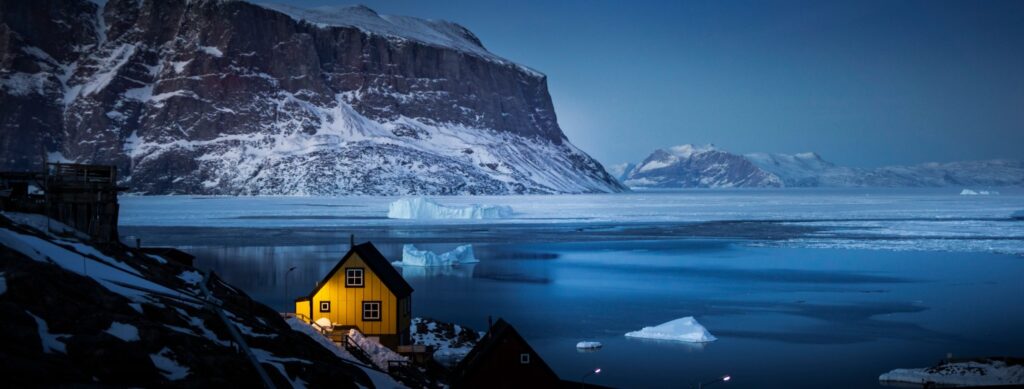Stretching between 68° and 81° N, Avannaata is the northernmost municipality in Greenland. With an area of about 522,700 km², it is the same size as Spain and the second largest municipality in Greenland. The municipality has just under 11,000 residents who live spread over its vast coastline in the four towns of Ilulissat, Uummannaq, Upernavik and Qaanaaq as well as in 23 settlements, including the settlements in Uummannaq that in 2017 were hit by a tsunami and therefore have been evacuated. The municipality was established in 2018 in connection with the division of Qaasuitsup Kommunia.
The shortest distance from Ilulissat to Qaanaaq is 1,070 km, or almost the same distance from Copenhagen to Venice, which causes some major logistical challenges in the municipality. Its northern location and the formation of winter ice mean that the districts of Uummannaq and Upernavik can only be served by ships for six months of the year and that the district of Qaanaaq only receives two supply ships each year. This presents some challenges in terms of food and goods supply and requires large frozen stores for the export of the Greenland halibut, which is the primary source of income of the districts. Furthermore, Internet speed and availability are limited in the northern parts of the municipality because they rely on satellite connection. Water supply is very limited in some towns and settlements. Living conditions therefore differ considerably from the towns and settlements further south. Avannaata is particularly affected by climate change because changes in the stability and distribution of sea ice affect hunting and fishing as well as local transport during winter. In the past, it was possible to drive a car across the sea ice for extended periods and between several settlements, however, that period has become shorter and traffic is subject to greater uncertainty.
Despite these challenges, employment in the municipality is relatively high as are incomes because of a good fishing industry and tourism. Together with the UNESCO area Sermeq Kujalleq (Jakobshavn Isbræ), Ilulissat is Greenland’s main tourist destination. Throughout the municipality, dog sledding continues to play a major role in hunting and fishing and increasingly so in relation to adventure tourism.
Just like in Kommune Qeqertalik, there has been extensive offshore oil and gas exploration, which in the past raised hopes for new business opportunities and jobs but also fears about pollution of the important fishing areas.
Some mineral resource projects are underway, including at the abandoned settlement of Moriusaq in the Qaanaaq district where the companies Dundas Titanium A/S and Greenroc Mining want to extract ilmenite sand. Concerns have been expressed by e.g. the Inuit Circumpolar Council (ICC) Greenland about the possible impact of increased activity on game in the Northern Water Polynya – a permanently ice-free open water area of vital importance to the marine ecology.
Since the 2009 municipal amalgamation, the municipality has been criticised by the northern towns and settlements for largely prioritising Ilulissat when it comes to public investment and initiatives. Thus, the wish for an autonomous northern municipality consisting of the districts of Uummannaq, Upernavik and Qaanaaq has regularly been mooted.
Since its establishment, Avannaata Kommunia, like the former Qaasuitsup Kommunia, has been run by Siumut, and the party won the April 2021 municipal elections. After a prolonged process of dividing the offices among those elected, the former mayor from Siumut chose to become an independent before being able to continue as mayor with the support of other parties.
The municipality prioritises longterm planning with focus on sustainability and consideration for the needs of the future as well as on finding new solutions adapted to local needs and challenges. At the same time, the intention is to strengthen the level of professionalism and service in the municipality.

